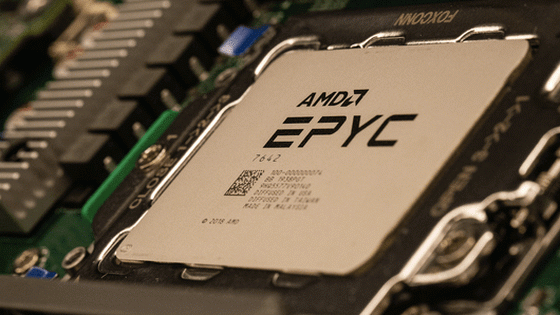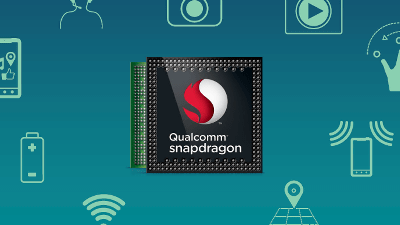A roundup of Nintendo Switch 2's unrevealed tech specs, including custom NVIDIA T239 SoC, Ampere-based GPU with 1536 CUDA cores, 12GB LPDDR5X RAM, and more

Nintendo Switch 2: final tech specs and system reservations confirmed | Eurogamer.net
https://www.eurogamer.net/digitalfoundry-2025-nintendo-switch-2-final-tech-specs-and-system-reservations-confirmed
It has been officially announced that the Nintendo Switch 2's CPU and GPU are custom processors made by NVIDIA, and the console's ROM capacity is 256GB.
Unofficially, more information has been revealed from the 'Nintendo Switch 2 motherboard' that a certain YouTuber got his hands on. For example, the SoC is NVIDIA's 'T239', the storage is Hynix's 256GB TLC UFS 3.1, MediaTek's MT3681AEN Wi-Fi / Bluetooth chip, Realtek's ALC5658 audio chip, a two-phase PMIC (power management IC) that supplies power to the SoC, etc. are installed, and the GPU has six TPCs (texture processing clusters) with two SMs (streaming multiprocessors) each, 128 CUDA cores per SM, and 1536 CUDA cores in the entire GPU.
Nintendo Switch 2 SoC analysis reveals eight A78C cores, 1536 Ampere shaders, and Samsung's 8nm process, with performance comparable to the GTX 1050 Ti - GIGAZINE

The CPU is an ARM Cortex A78C running the ARMv8 64-bit instruction set, with the Nintendo Switch 2 having a 64K L1 instruction cache and a 64K L1 data cache, eight 256K L2 caches and all eight cores sharing 4MB of L3 cache.
The original Nintendo Switch had four ARM Cortex A57 cores, one for OS functions and three for developers. Eurogamer speculates that the Nintendo Switch 2 will have a similar ratio, with six cores available to developers and two reserved for running the OS. It has been pointed out that the CPU clock frequency is 1100MHz in portable mode, and drops to 998MHz in performance mode, which is used in TV mode. Eurogamer speculates that the reason the CPU clock frequency is higher in portable mode than in performance mode is because memory bandwidth is reduced in portable mode, which is likely to affect CPU performance.
In addition, since Nintendo has stated that the maximum CPU clock frequency is 1.7 GHz, Eurogamer points out that the difference from the leaked information may be a theoretical maximum that Nintendo may release in the future, or a clock frequency that is demonstrated in special circumstances. In the Nintendo Switch, the GPU was downclocked during the loading screen and the CPU was raised to a maximum of 1.785 GHz using thermal headroom to improve loading times, so it is possible that the Nintendo Switch 2 will do the same.

The maximum GPU clock frequency is unofficially confirmed to be 561MHz in portable mode and 1007MHz in performance mode, but officially stated to be 1.4GHz. Developers can adjust the clock frequency rate, but they cannot use the full GPU resources, some of which are allocated for system use.
The memory (RAM) uses 12GB of LPDDR5X, with a memory bandwidth of 102GB/s in performance mode and 68GB/s in handheld mode. Of the 12GB of memory, 3GB is reserved by the system itself, leaving 9GB available to developers. Since the Nintendo Switch only has 4GB of memory in total, with 3.2GB available to developers, Nintendo is now reserving most of the RAM for non-gaming functions.

While the Nintendo Switch 2 mostly uses custom variations of existing technology, it does have one component that's entirely custom made for Nintendo: something called the 'FDE (File Decompression Engine),' which helps with storage and data transfer.
The Nintendo Switch 2 has 256GB of UFS storage, but microSD Express cards of up to 2TB can be used as external storage. Data is usually compressed on the storage, so when loading a game, it needs to be decompressed in addition to being loaded. This is where the FDE is responsible for decompression. Eurogamer points out that the Nintendo Switch 2 should be faster and more power efficient because it can leave the decompression to the FDE instead of the CPU.
Based on other detailed information and rumors, the specs are speculated to be as follows:
| Nintendo Switch 2 | Nintendo Switch | |
|---|---|---|
| CPU architecture | 8x ARM Cortex A78C | 4x ARM Cortex A57 |
| CPU clock frequency | 998MHz (TV mode), 1101MHz (mobile mode), up to 1.7GHz | 1020 MHz (TV/Mobile mode), up to 1.785GHz |
| CPU Cores | 6 cores (plus 2 cores for system) | 3 cores (plus 1 core for system) |
| GPU Architecture | Ampere | Maxwell |
| CUDA Core | 1536 | 256 |
| GPU Clock Frequency | 1007MHz (TV mode), 561MHz (mobile mode), Max 1.4GHz | 768MHz (TV mode), up to 460MHz (mobile mode), Max 921MHz |
| Memory | 128-bit/LPDDR5 | 64-bit/LPDDR4 |
| Memory Bandwidth | 102GB/s (TV mode), 68GB/s (mobile mode) | 25.6GB/s (TV mode), 21.3GB/s (handheld mode) |
| Memory capacity | 9GB (+ 3GB for system) | 3.2GB (+ 0.8GB for system) |
Related Posts:






